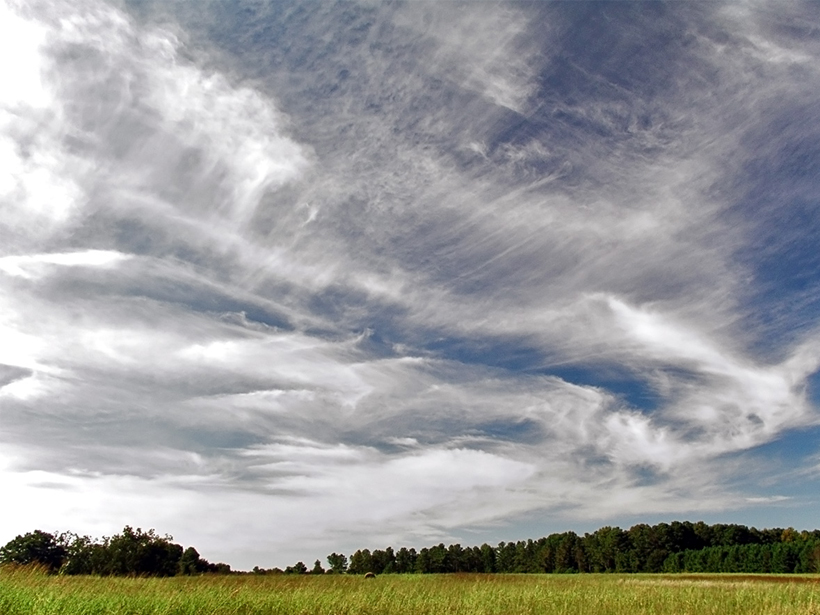Source: Earth and Space Science
The effects of clouds on Earth’s climate are so complex that some scientists have called them the “wild card” of climate science. Clouds can either cool Earth’s surface by reflecting sunlight or trap heat like a blanket, leaving scientists unsure whether clouds will accelerate or slow global warming. To understand the relationship between clouds and climate, researchers are scrambling to better measure and model clouds’ ever-changing qualities, such as the sizes of the tiny ice particles and water droplets that compose them.
In a new study, Jiang et al. propose a new method to measure cloud properties from space more accurately, which could improve climate and weather predictions. The researchers combined two types of remote sensing technology—passive and active sensors—to create an instrument suite that can accurately capture many different properties of clouds at high resolution. Active sensors shoot beams of microwaves at clouds and use the echoed signals to study their composition, whereas passive sensors detect various wavelengths of electromagnetic radiation emitted by clouds themselves.
The new tool builds on an existing instrument called Tropospheric Water and Cloud ICE (TWICE), which detects 14 different millimeter and submillimeter wavelengths and which Jiang and colleagues have described in previous studies. The new instrument, called Earth’s Next-generation ICE (ENTICE), adds two more frequencies: 94 gigahertz for active radar detection and 850 gigahertz for use in a passive radiometer. The added frequencies improve the vertical resolution of ice cloud measurements from 3–4 kilometers to 0.5 kilometer, the team reports.
The combined 94-gigahertz radar and multifrequency radiometer suite also enabled ENTICE to more accurately capture the effective diameter of ice particles within clouds while simultaneously measuring humidity and temperature. Such measurements are key to understanding the dynamic and small-scale processes that occur within clouds and could improve both climate models and weather forecasts, the team says. (Earth and Space Science, https://doi.org/10.1029/2019EA000580, 2019)
—Emily Underwood, Freelance Writer
Citation:
Underwood, E. (2019), A better way to measure cloud composition, Eos, 100, https://doi.org/10.1029/2019EO129887. Published on 30 July 2019.
Text © 2019. The authors. CC BY-NC-ND 3.0
Except where otherwise noted, images are subject to copyright. Any reuse without express permission from the copyright owner is prohibited.

